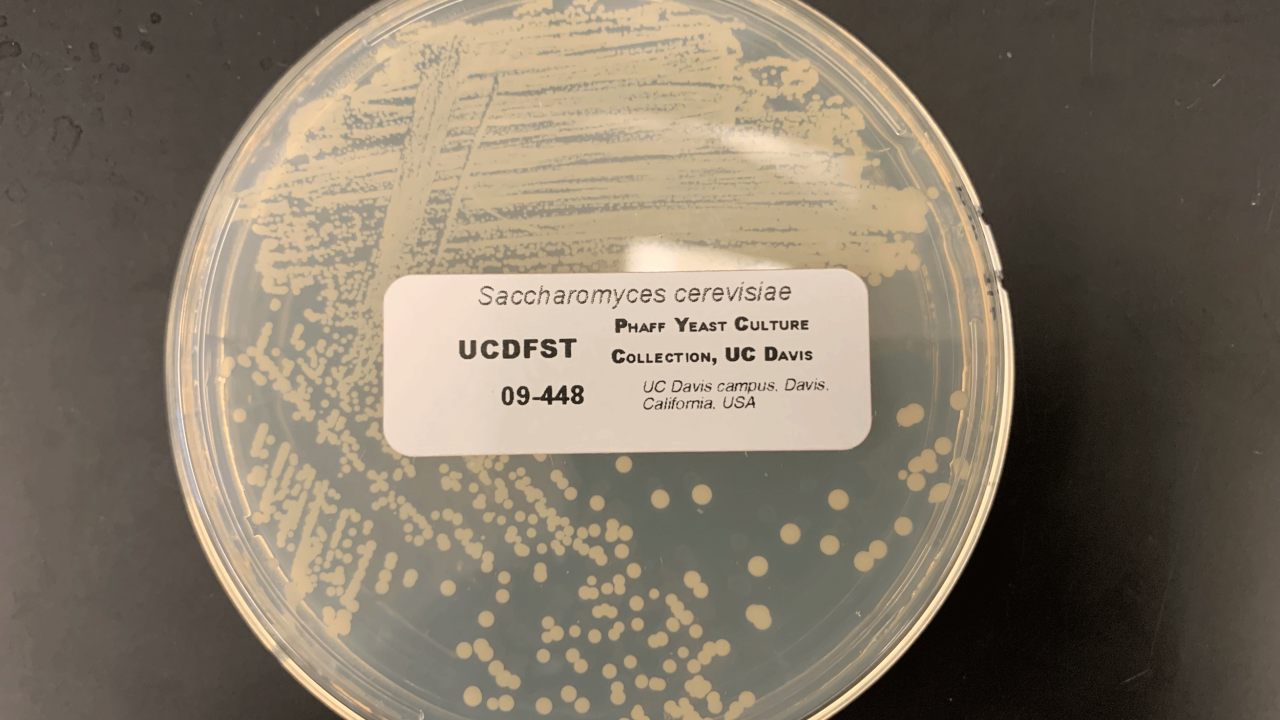
10 Nov Yeast Strain from UC Davis Phaff Yeast Culture Collection Being Used to Improve Food Safety
Article originally posted on the UC Davis College of Agricultural and Environmental Sciences News page
Author: Tiffany Dobbyn
Date: October 11, 2022
Reproduced here with authorization of the author
Yeast identified as cause of olive spoilage is now being used to remove toxic compounds from fried foods
A popular species of yeast that’s used to make beer, bread and wine is also contributing to the food industry in a different way – improving food safety. A yeast strain from the UC Davis Phaff Yeast Culture Collection is being used commercially to remove a toxic compound from fried and baked foods.
Kyria Boundy-Mills, curator of the Phaff Yeast Culture Collection, said Canadian bioengineering company Renaissance BioScience purchased strains of yeast species, Saccharomyces cerevisiae, from the university to develop a non-GMO dried yeast that reduces the formation of acrylamide in commonly consumed cooked foods.
Acrylamide is a by-product of cooking foods containing asparagine, an amino acid that is found naturally in carbohydrate-rich foods, including bread, potato chips, cookies and cereals. Acrylamide forms during high-temperature cooking, such as frying, baking or roasting.
“Acrylamide is a toxic chemical that we don’t want to have too much of in our food,” Boundy-Mills said. “Researchers from Renaissance BioScience mined the world’s Saccharomyces genome sequence data and found several strains, including our strains, interesting.”
The properties of the university’s yeast had the potential to reduce the toxic chemical by breaking down asparagine. Renaissance BioScience was able to uncover this ability by evolving the strain using their patented adaptive evolution process.
Food manufacturers are now using Renaissance’s acrylamide-reducing yeast by adding it to foods before they are cooked to break down asparagine and therefore reduce the level of acrylamide produced.
From troublemaker to champion
Boundy-Mills said the yeast first got attention during a 2009 research project at UC Davis that examined the cause of recurring olive spoilage. Olive processors were dealing with entire tanks of fermented Sicilian-style olives, worth tens of thousands of dollars per tank, turning into little pieces of mush. Boundy-Mills and Professor Maria Marco from the Department of Food Science and Technology were part of a research team that worked to isolate hundreds of yeasts and bacteria from the fruit and discovered one yeast, Saccharomyces cerevisiae, was the culprit behind the spoilage.
The same yeast strain that turned olives into mush is now making improvements to food safety.
“This yeast strain, that was wreaking such havoc in those olive tanks, is now redeeming itself by contributing to basic life science knowledge and to a safer and more sustainable food supply,” said Boundy-Mills.
Possibilities are endless
The Phaff Yeast Culture Collection is the fourth largest collection of its kind in the world with more than 9,000 strains belonging to approximately 1,200 different species. While there are many known beneficial uses of yeast, Boundy-Mills said there’s still a lot to be learned about the single-celled fungi and how it can help consumers.
“The yeast that we do know a lot about are very beneficial,” she said. “And then there’s so much about yeast that we don’t know yet; there could be a whole world of new products and we are one by one making discoveries. There are so many ways that yeast can be used to improve our lives.”
Media Resources
- Kyria Boundy-Mills, Phaff Yeast Collection and Department of Food Science and Technology, klbmills@ucdavis.edu
- Tiffany Dobbyn, College of Agricultural and Environmental Sciences, tadobbyn@ucdavis.edu
